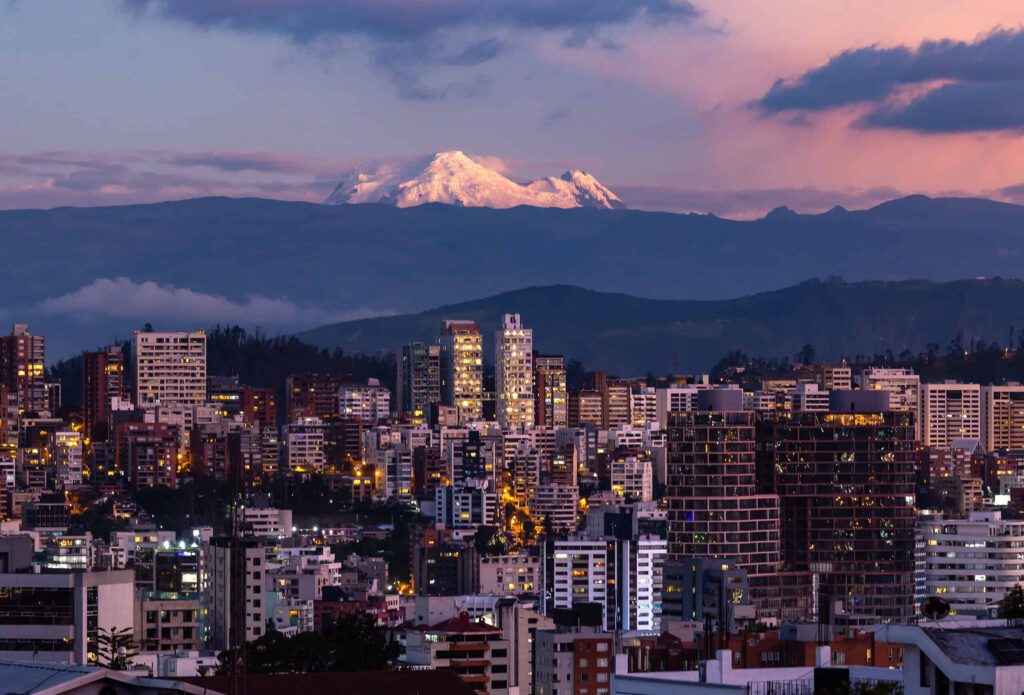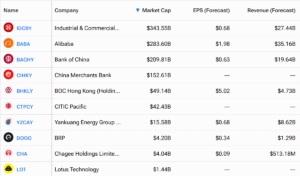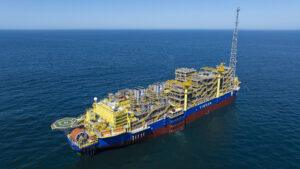While many of its Latin American neighbors are benefiting from post-pandemic tailwinds—including surging commodity prices and a nearshoring boom driven by the US—Ecuador continues to struggle. Political instability, energy shortages, and a surge in urban violence have undermined investor confidence, leading to a 2% contraction in GDP last year—the worst performance in the region.
Even more troubling, foreign direct investment (FDI) has collapsed. According to Statista, FDI fell more than 83% from its 2018 peak of $1.39 billion by 2024. The declines have accelerated in recent years, with a 46% year-over-year plunge in 2023 followed by a 51% drop in 2024, bringing foreign investment to its lowest level since 2010. After years of underperformance, however, signs are emerging that the country may finally be poised for a turnaround.
| VITAL STATISTICS |
|---|
| Location: South America |
| Neighbors: Colombia, Peru |
| Capital city: Quito |
| Population: 18.1 million (2024) – IMF |
| Official language(s): Spanish |
| GDP per capita: $16,062 (2023) – World Bank |
| GDP growth: -2.0% (2024), +1.7% projected (2025) – IMF |
| Inflation: +0.46% YoY (April 2025), lowest in Latin America – IMF, 2025 |
| Currency: US Dollar |
| Credit Rating: Credit Rating: Caa1 (Moody’s); CCC+ (S&P and Fitch Ratings) |
| Investment promotion agency: PRO ECUADOR, which operates as a Vice Ministry within the Ministry of Production, Foreign Trade, Investments and Fisheries. |
| Investment incentives available: 0% capital gains tax until 2030, free-trade zones. |
| Corruption Perceptions Index rank (2024): 121st of 180 countries – where 180th is the most corrupt. |
| Political risk: Medium-high |
| Security risk: High |
| PROS |
|---|
| Rebounding economy with untapped mining and energy potential. |
| No currency risks due to dollarization. |
| Holds the lowest inflation rate in Latin America. |
| CONS |
|---|
| Volatile political and social environment. |
| Ecuador has the highest murder rate in Latin America. |
| It has experienced nationwide energy blackouts over the last several years. |
Sources: The World Bank, IMF, Central Bank of Ecuador, Moody’s, S&P Global, Fitch Ratings, Government of Ecuador, US State Department.
A recent crackdown on organized crime has brought some relief on the security front, while new public-private partnerships (PPPs) are beginning to address long-standing infrastructure challenges, revitalizing the long-battered construction sector. Moreover, a fresh $6.55 billion extended fund facility from the International Monetary Fund, set to run through 2027, promises critical backing for the country’s economic recovery.
Add to that a wave of pro-business reforms reigniting investor interest, and 2025 could mark the start of a more optimistic chapter, along with fresh opportunities in the country for foreign investors. As inflation ticked slightly below 0.5% year-over-year in April, Ecuador’s central bank and the IMF now project a solid year for GDP, forecasting 2.5% and 1.7% growth, respectively.
Yet, as Daniel Godoy, chief economist at Produbanco, notes, FDI for Ecuador “will not multiply exponentially overnight … It is a process that must consolidate various strategies.”
The President’s Mandate
President Daniel Noboa’s decisive reelection in April, when he secured roughly 55.6% of the country’s valid ballots, has handed him a stronger mandate and a working majority in the legislature, allowing him to pursue a deeper restructuring.
Among his first moves, the 37-year-old president has proposed a constitutional amendment allowing the establishment of foreign military bases in the country, a sign of greater affinity with Washington. He is also looking to secure greater police powers to counter the problem of urban violence.
On the business side, Noboa wants to leverage Ecuador’s growing PPP portfolio to develop the country’s lagging infrastructure, which many foreign investors regard as a first-order problem. And in a bid to boost FDI, the government in April established two new free-trade zones, Posorja and Pascuales, covering more than 117 hectares of strategically located industrial land in Guayas province. The move aims to deepen Noboa’s free trade plans, which began in February of last year, with the goal of leveraging the country’s fully dollarized economy.
“Ecuador’s new free-trade zones and tax incentives are welcome signals to investors, especially when paired with the stability of dollar ization, which removes currency risk,” says Rafael Barisauskas, senior economist for Latin America at Fastmarkets.
Navigating US-China Tensions
Complicating the effort to reignite FDI are the tensions between the two economic superpowers, China and the US.
Last year, despite the plunge in FDI, Chinese investments in Ecuador rose by a huge 58% year-over-year, reaching approximately half of the total. Conversely, US investment was down 9% from 2023 levels, accounting for just under 25%. The trend could already be deepening this year, with a $1.2 billion agreement in March with China’s state-owned Sinopec to develop the Sacha oil field: Ecuador’s largest FDI commitment in years.
If well managed, Ecuador’s position between the two global giants could present an opportunity, Barisauskas argues.
“The US-China trade war has heightened competition for influence in Latin America,” he notes, “allowing Ecuador to leverage both sides while navigating conflicting standards on transparency, environmental rules, and tech infrastructure.”
Moreover, in February the government secured a free trade deal with Canada, expected to provide a further boost to its resource-rich mining sector.
The recent Chinese and Canadian deals point to a revival for Ecuador’s traditionally strong energy and mining industries. Through PPPs, Noboa aims to inject around $11 billion into the economy over the next several years to address historically deficient energy and road lines. Boosted by the Sinopec deal, the government now projects as much as $42 billion in investment from foreign oil companies over the next five years.
In mining, meanwhile, a trio of major projects—Curipamba, La Plata, and Loma Larga—are poised to move into the exploitation phase, representing roughly $1 billion in near-term capital inflows. If momentum holds, mining could become the country’s third largest export category this year, with the potential to generate more than $4 billion annually.
Other non-manufactured exports, such as bananas, shrimp, and flowers, are also projected to post a rebound in 2025, buoyed by solid demand in US and European markets, despite global headwinds. Other sectors with “great potential,” Godoy says, include agriculture, tourism, commerce, and environmental protection.
Produbanco’s Godoy also highlights the importance of the country’s resilient banking sector for the broader rebound.
“There are at least three factors that currently define [the banking sector’s] position to support the economic recovery: strong profitability metrics, controlled credit risk, and available local and international funding,” he says. Despite last year’s GDP contraction, “productive credit recorded an annual growth of 9.8% at the end of 2024, with an upward trend, i.e., an annual growth rate of 15.4% at the end of May 2025.”
Given the anticipated multi-sector rebound, Ecuador is now expected to secure a $3 billion trade surplus this year, improving the country’s substantial current account deficit and opening the door for further debt issuance and IMF support.
Infrastructure Woes
Even with seemingly improving economic conditions, a sustained change may still hinge on deeper improvements in the country’s business framework and infrastructure.
“Compared to leading regional peers like Mexico and Costa Rica, which combine efficient logistics, reliable infrastructure, skilled labor, and regulatory transparency with strong integration into global value chains, Ecuador still has progress to make,” Barisauskas argues.
According to Ecuador’s Secretariat for Public-Private Investments, a massive $72 billion is needed through 2030 to improve the currently lagging transportation, energy, telecommunications, water, and sanitation infrastructure. The figure represents roughly 59% of the country’s GDP as of last year. Transportation and energy are the areas requiring the most extensive new investment, according to the secretariat, at $23 billion and $21 billion, respectively.
“Ecuador must upgrade its logistics and transport infrastructure, streamline regulations, and leverage the trust that comes from its dollarized system to compete,” Barisauskas warns.
A rebound in FDI will also depend on support from local investors, Godoy adds.
“How can we convince an international investor to invest in Ecuador if local residents themselves are not allocating resources for the generation and implementation of investment projects?” he says. “We need more local entrepreneurs, more diversification.”
The post Ecuador: Aiming For A Turnaround appeared first on Global Finance Magazine.




